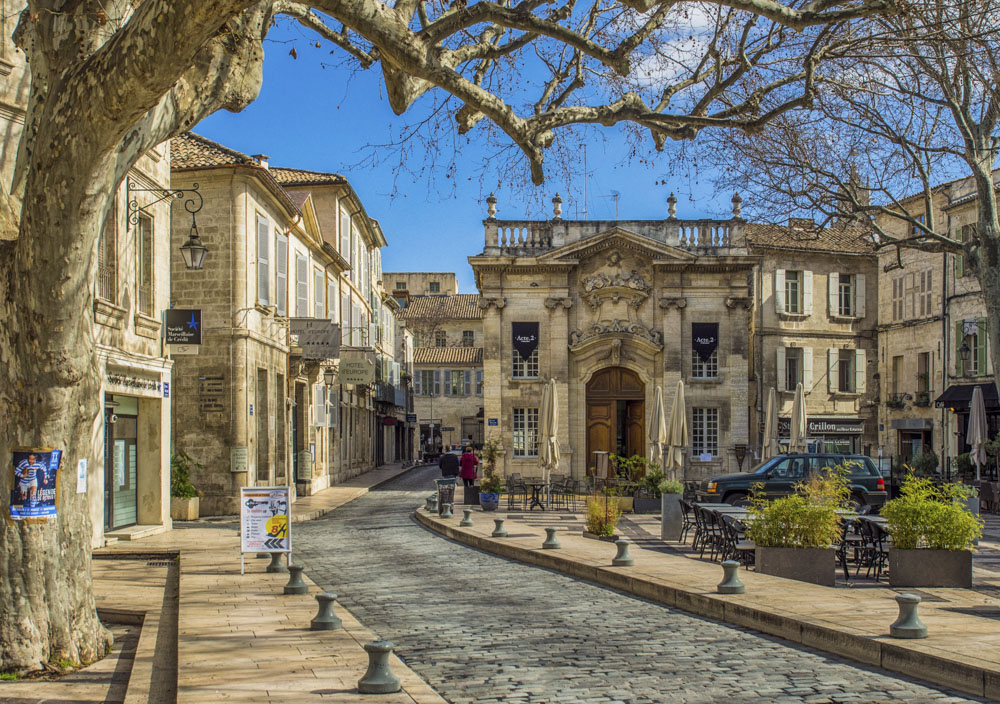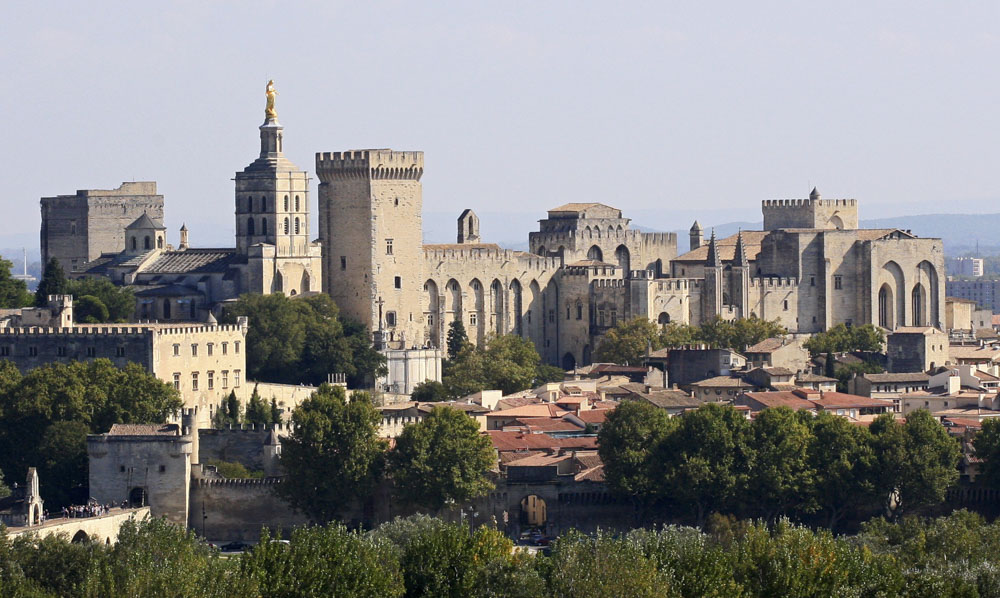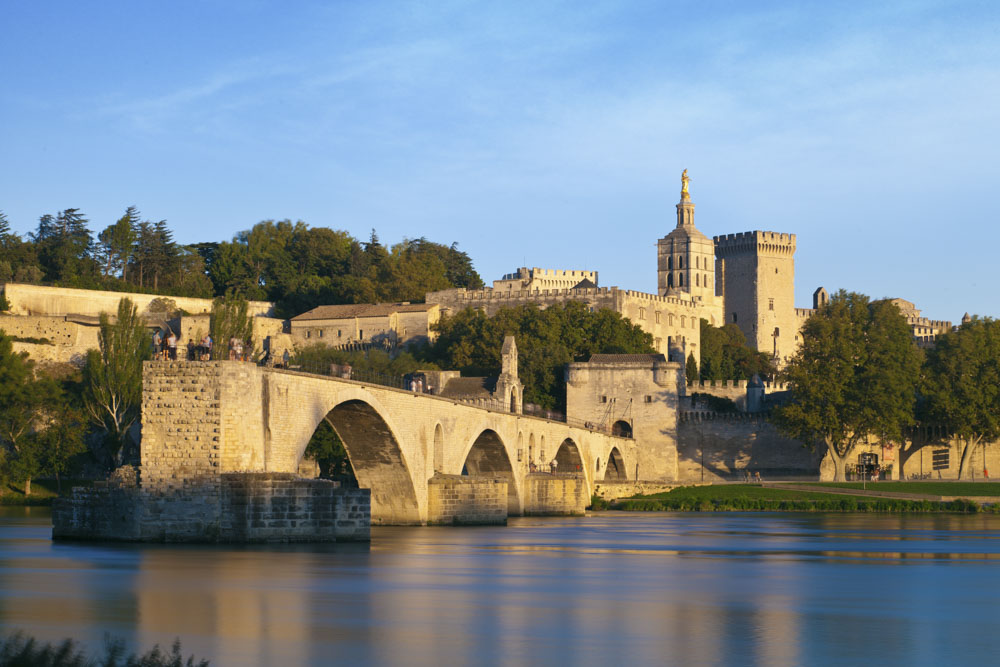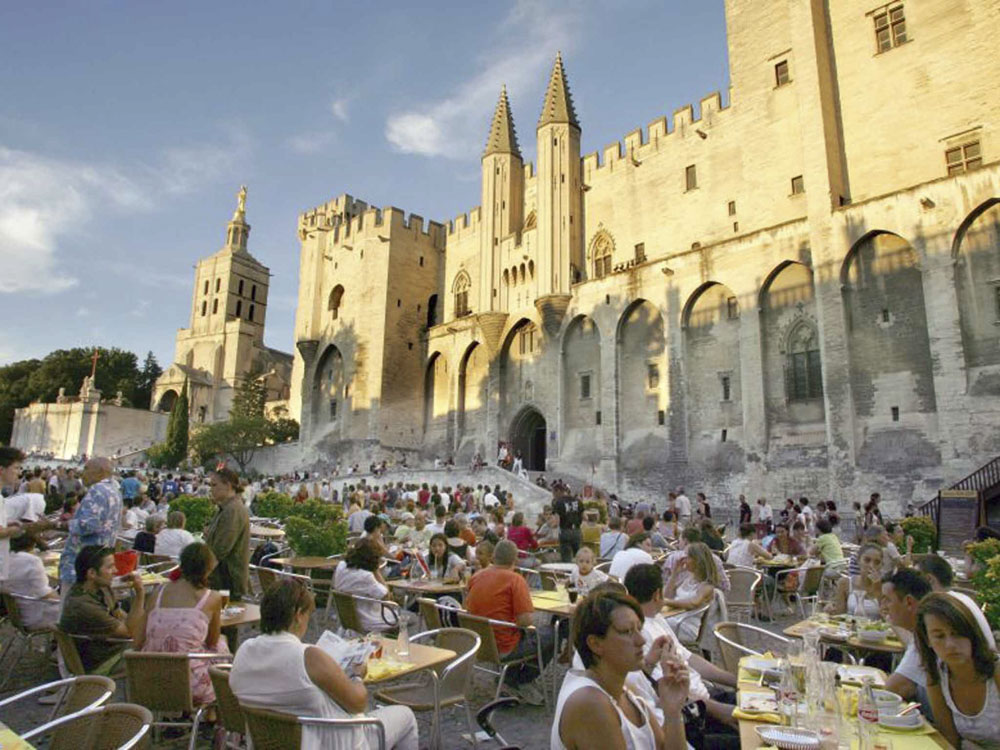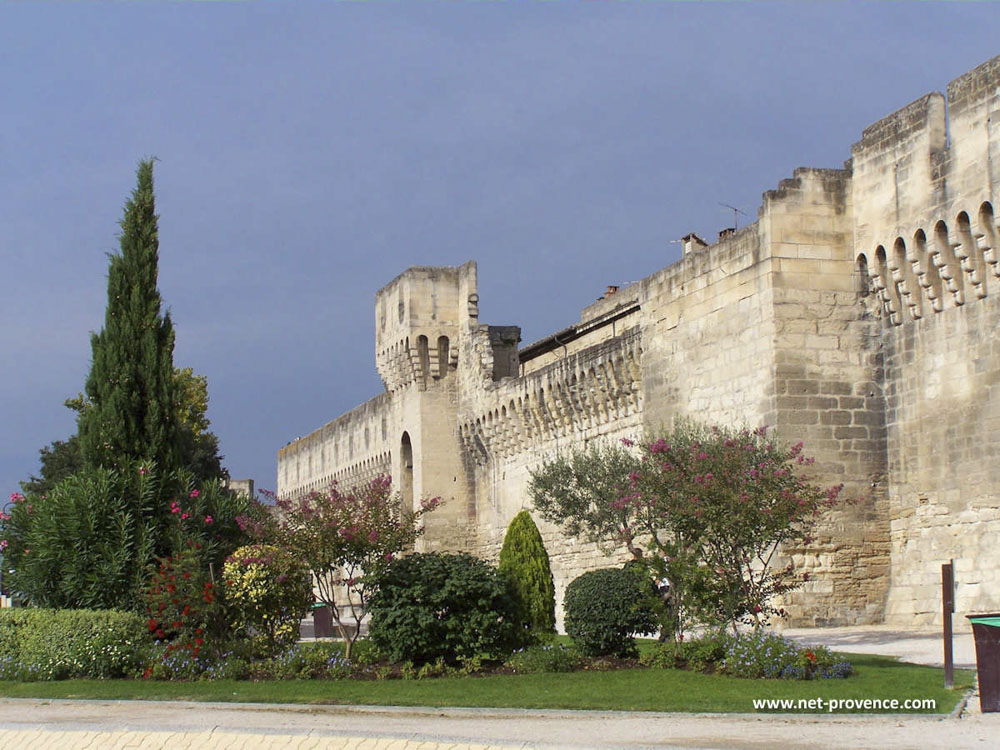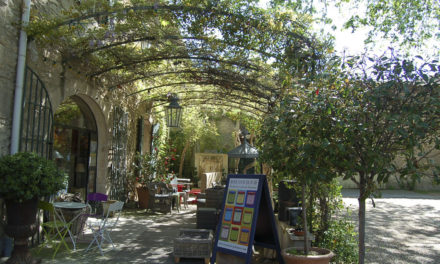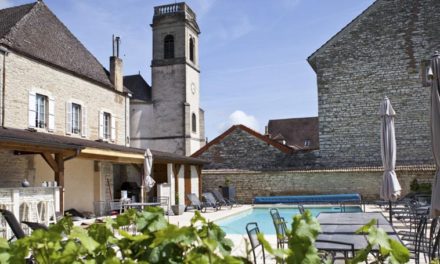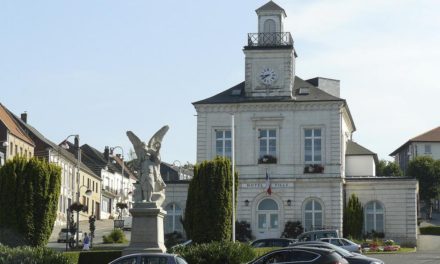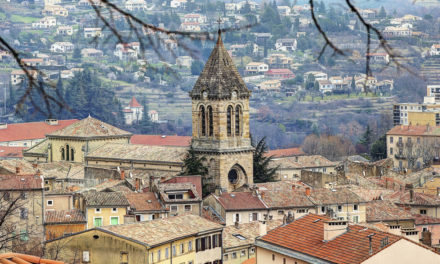Avignon is the capital city of Vaucluse, a department in south-eastern France in the region of Provence-Alpes-Côte d’Azur. It is situated on the left bank of the River Rhône and was for centuries one of the major artistic centres of Europe. Its medieval walls enclose this ancient cathedral city which is also known as the City of Popes, being the residence of popes escaping from Rome during the “Great Schism” of the Catholic faith in the 14th Century.
Currently 16,000 people (of a total local population of approximately 200,000) live in the old town surrounded by the magnificent ramparts for which Avignon is famous. It is the largest city in the Vaucluse and one of the few to have restored and preserved its historic town centre which has been classified a World Heritage site and includes the Bridge of Avignon or “Pont d’Avignon”.
Book a Hotel in Avignon
History
Situated in a strategic position at the confluence of two significant rivers, the Rhône and the Durance, Avignon was an important trade route from very early times. With an island in the middle of the Rhône river, it was possible to ferry people and provisions across the water and later to build a bridge, furthering communication throughout the region. It has been continuously inhabited since the Stone Age, when early man lived in the caves of the Rocher des Doms, a massive rocky bluff which has now been transformed into a scenic park giving a panoramic view overlooking the Rhône and the surrounding landscape.
The Romans had an influence on the construction of the city though the modern streets have largely been built over the remains of the original walls. Vestiges of the Roman forum can be viewed to the west of the city, near the Rue Racine and the Rue St. Etienne.
Pope Clement V first moved the papal headquarters to Avignon in 1309 and for the next hundred years or so, Avignon was the power centre of the Catholic church, bringing with it all the attendant lawyers, doctors, merchants, builders, artists and pilgrims from all over Europe, generating wealth and making it a very lively, popular place to live. Le Palais des Papes or the Palace of Popes, built in 1342 within the city walls, is the world’s largest Gothic edifice, a massive, rather grim fortress with a fascinating architectural history. The slightly dubious French popes of this period may have proved a blessing to the development of the city but their way of life led to a corrupt and sleazy haven for a disparate society and many historic buildings fell into disrepair. Their presence made Avignon into a city of great political and economic activity but in 1348, the Black Death struck and plague and famine took its toll, leaving the city in a pool of filth and degradation.
Today, Avignon is a prosperous university town bursting with life and energy. Elegant shops and designer boutiques stand side by side with churches and historic mansions. Extravagant palaces built by wealthy cardinals and known as livrées (some of which are across the river in Villeneuve-les-Avignon) have been transformed into hotels and are sources of great interest with some of their original features having been beautifully restored. Very little remains of the original Pont d’Avignon, apart from four arches which are constant reminders of the famous song known throughout the world. Directly across the river at Villeneuve-les-Avignon is the Philippe le Bel Tower, an historic watchtower, which was built between 1292 and 1307, giving a wonderful view of Avignon, the Rhône and surrounding countryside.
Avignon is one of France’s major visitor destinations and an important cultural centre during the summer time. The annual Festival of Avignon is held in July when the city presents a classical theatrical extravaganza and the tourist industry goes into overdrive with a great party atmosphere and non-stop activities.
Attractions
The historical charm of Avignon is legendary and there are many fine examples of medieval architecture throughout the Old City, the entrance to which is through a majestic gateway called the Porte de la République. Cours Jean Jaurez is a tree-lined street leading from the Ramparts into the heart of the city, becoming the Rue de la République when entering the commercial district. Following the river along the east bank, it leads through the centre to the main square, Place de l’Horloge, where there are several cafés and restaurants. The Place du Palais is across the square from the Papal Palace which covers an area of 3.5 acres. This ornate building features a unique facade and is well worth a detailed visit. The city’s old town is a maze of narrow winding streets, some smart and some rather seedy, but the mixture somehow adds to the attraction and there are plenty of places to explore which are easily accessible on foot. Amongst the beautiful courtyards and gardens there are several churches and buildings of outstanding interest.
There is a lovely traditional merry-go-round off the main square and go-karts and bikes for children can be hired behind the Papal Palace where there is also a children’s playground. Ride the Petit Train which tours the main streets causing traffic congestion for pedestrians and cars alike !
The Cathédral Notre Dame des Doms was originally built in the 12th century but was extensively modified in the 14th and 17th centuries. Of note to visitors are a gold-gilded statue of St. Mary, a 16th century figure of Jesus Christ, a magnificent cupola and the tomb of Pope John XXII in an adjacent chapel.
The Avignon Carte Pass is a good investment for touring the city’s attractions which can be bought at the Office de Tourisme or at the point of entry to the museums. After an initial outlay for the first admission, you will be offered between 20-50% reductions on subsequent tickets for unlimited visits.
Avignon’s central market is called Les Halles which is open daily (except Monday) until 1pm. It has a huge selection of local produce including speciality bread, various cheeses, olives and Mediterranean vegetables.
There are several important museums including the Musée Angladon-Dubrujeaud which exhibits paintings by Cezanne, Sisley, Manet, Modigliani and Picasso, located in the Hotel de Massilian on Rue du Laboureur. The Collection Lambert is in the Hotel de Caumont, an elegant mansion on Rue Violette which was established in 2000 featuring a contemporary art collection. Musée du Petit Palais is at the northern end of Place du Palais with 19 rooms having an extensive collection of frescoes, sculptures and religious paintings from the 13th to 16th centuries, including some by Botticelli.
Chateauneuf du Pape is a few miles up the river and a gentle drive through the typical Provencal landscapes, vineyards and charming villages of the Côte du Rhone is a very special way to experience the flavour of the region. There are also leisure boat cruises with experienced guides to explain the history of the river and its importance in the development of the city.
Accommodation & Restaurants
Avignon offers a wide choice of hotels, historic b & b’s and apartments to suit everyone’s budget. During the summer months the city is full of visitors and it is advisable to book accommodation well in advance, especially if you want to stay in the Old City or you specifically want a room with views across the Rhône. At the luxury end of the market, Hotel de l’Europe in Place de Crillon is probably Avignon’s most stylish place to stay which is a glorious sanctuary of good living tucked away with its own delightful gardens and an excellent restaurant famously visited by Charles Dickens, Henry James and Elizabeth Barratt Browning en route to the Riviera. La Mirande Hotel is a 5 star residence housed in a 700 year old converted townhouse. However, there are many mid-range accommodations offering first class facilities and a warm welcome.
Food establishments are in evidence throughout Avignon and local specialities include Papalines d’Avignon liqueur chocolates, Provence herbs, Fougrasse bread, nougat, candied fruits and, of course, Côte du Rhone wines to accompany the delicious dishes. The restaurants and brasseries are good value and are often located in historic buildings, giving diners a very romantic atmosphere in which to enjoy their meal. During the Festival, Avignon really comes to life and the restaurants and bars welcome visitors with traditional Provencal food and live entertainment.
Travel
By road: Situated on the Rhone river, Avignon is located where the A6 Autoroute du Soleil splits into the A7 (exit 23 Avignon Nord and exit 24 Avignon Sud) and A9 (exit 23 Remoulins, follow signs to Avignon via the N100 (20km).
By rail: Eurostar from London connects with Lille with TGVs direct to Avignon.
Alternatively, from Paris take the TGV direct to Avignon.
By air: From London: Fly to Marseille-Provence airport with Easyjet and Ryanair.
Direct flights to Avignon are also available from Southampton, Exeter and Birmingham with Flybe.
Tourist Office
The Office de Tourisme is conveniently located on the east side of Cour Jean Jaures within the city’s walls, between the central train station and the city’s main square, the Place de l’Horloge.
41 Cours Jean Jaures/Rue de la Republique
BP8-84004 Avignon
Tel: (+33) (0) 4 32 74 32 74
email: information@ot-avignon.fr

